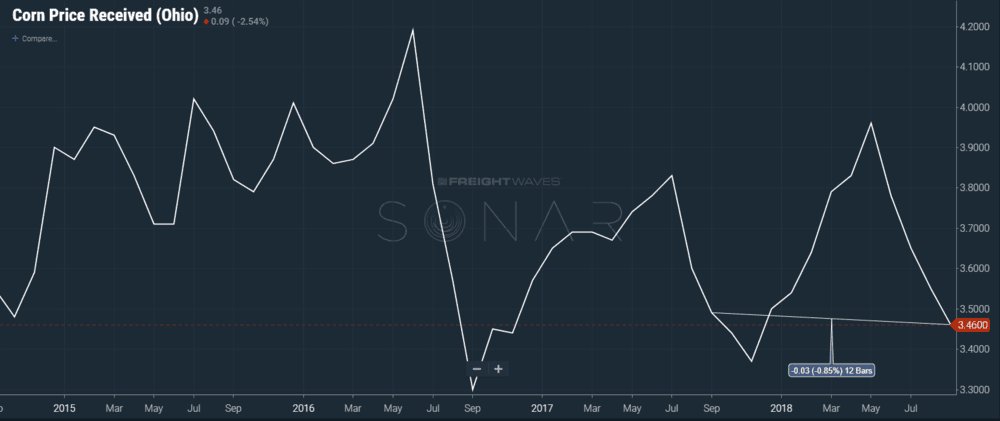Ohio farmers are rushing to finish their harvests, on pace to haul in some of the best yields in years. Corn and soybean fields are plentiful across the Buckeye State, and soybeans is its number one crop. A recent list published by Beef2Live.com ranks Ohio as the sixth-leading producer of soybeans in the U.S., with more than 246 million bushels in 2015 (most recent data). It’s the tenth-leading producer of corn in the U.S. with almost 525 million bushels in 2016 (most recent data).
A summer drought across northern Ohio had some farmers thinking it would be a bad year, but the unusually dry weather didn’t last long enough to destroy entire crops or significantly delay planting.
Eric Klein, a farmer in Malinta, Ohio, told AgWeb in an interview that he’s been busy and is very happy with his yields despite a few untimely breakdowns.
About 10 miles south in Hamler, Ohio, farmer Nate Like said his yields of corn and soybeans are “20 to 30 to 40 percent better than we’ve ever had in the past.”
The latest report from the United States Department of Agriculture (USDA) is mostly optimistic. Corn harvest progress last week remained ahead of the five-year average, while the soybean harvest progress still lagged a bit behind the five-year average as well as the harvest at this time last year. So far in 2018, 64 percent of corn has been harvested for grain across the state, while 75 of soybeans have been pulled.
Mother Nature has cooperated pretty well recently, giving growers time to pull a lot out of their fields. Rain fell across the Buckeye State at the start and end of last week, but the five days in between were suitable for fieldwork in Ohio during that same week (ending October 28). Topsoil moisture moved from 10 percent surplus to 19 percent surplus after Sunday’s heavy rainfall. Corn and soybean combines moved quickly as the harvested progress increased 17 percentage points for both crops last week.
Temperatures remained cooler than normal last week, according to Cheryl Turner with the USDA National Agricultural Statistics Service, Ohio Field Office. The average moisture content of corn harvested last week dropped one percent to 17 percent, and the average for soybeans also dropped one percent to 13 percent due to the dry weather in the middle of the week.
Even in light of recent positive productivity, there have been challenges such as quality issues and some minor losses. Like said he’s lost about 10 to 15 bushels of corn from ears that have dropped, and Klein has some ears lying on the ground, too.
“You want it in the tank,” said Klein. “Once it’s on the ground it don’t get in your pocket.”
However, there’s been enough harvesting to nearly fill storage facilities. Like said that local elevators are having a hard time keeping up with the high yields.
The price of corn and soybeans in Ohio are very low right now because of the high supply, and the price of corn is even a bit lower than at this time last year during harvest. So, growers might keep some of their harvests in storage for a while to wait for higher prices. Depending on what they do, outbound shipments from northern Ohio could increase very soon, then flatten, and then go up again later.












